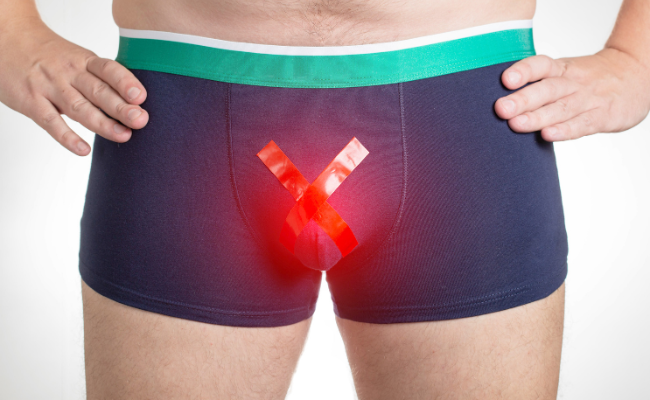How to Treat Balanitis?
- November 27, 2023
- No Comments

What is Balanitis?
Balanitis is a medical condition marked by the inflammation of the glans, the rounded head of the penis. This inflammation gives rise to discomfort and various symptoms such as redness, swelling, itching, and pain. It can impact men of all ages, necessitating prompt attention to prevent complications. The manifestation of balanitis includes pain, inflammation, swelling, and irritation in the glans, particularly prevalent in uncircumcised individuals or those assigned male at birth (AMAB). Circumcision, the removal of the foreskin from the penis's head (glans), is linked to a decreased risk of balanitis. While yeast infections are a common cause, balanitis can also be triggered by bacterial and viral infections, along with specific dermatological conditions affecting the skin.
Why does Balanitis Occur?
Balanitis can be caused by various factors, and understanding the underlying reasons is crucial for effective treatment. One common cause is poor hygiene, as inadequate cleaning of the genital area can lead to the accumulation of smegma, a substance that can irritate the glans. Additionally, bacterial or fungal infections, sexually transmitted infections (STIs), skin conditions like psoriasis, and certain allergies can contribute to the development of balanitis. In some cases, irritation from harsh soaps or detergents can also trigger inflammation.
How to Identify Balanitis?
Identifying balanitis involves recognizing its symptoms. These may include redness and swelling of the glans, itching, soreness, and a discharge with an unpleasant odor. In more severe cases, individuals may experience pain during urination or intercourse. If you notice any of these symptoms, it is crucial to consult with a healthcare professional for a proper diagnosis.
Treatment Solutions for Balanitis:
- Improved Hygiene: One of the primary steps in treating and preventing balanitis is practicing good genital hygiene. Regularly clean the penis with mild soap and water, ensuring that the area is thoroughly dried afterward. Avoid using harsh soaps or strong detergents, as they can exacerbate irritation.
- Topical Antifungal or Antibacterial Medications: If the cause of balanitis is a fungal or bacterial infection, topical medications can be prescribed by a healthcare provider. Antifungal creams, such as clotrimazole or miconazole, are commonly used for fungal infections, while antibiotic creams like mupirocin can be effective against bacterial causes.
- Avoiding Irritants: Identify and eliminate potential irritants that may be contributing to balanitis. This includes avoiding scented soaps, bubble baths, and harsh laundry detergents. Opt for hypoallergenic and fragrance-free products to minimize irritation.
- Treatment of Underlying Conditions: If balanitis is a symptom of an underlying condition, such as psoriasis or diabetes, it is essential to address the primary issue. Treating the root cause can help prevent recurrent episodes of balanitis.
- Oral Medications: In some cases, oral medications may be prescribed to address the infection or inflammation. These medications are usually recommended for more severe cases or when topical treatments alone are insufficient.
- Warm Compress: Applying a warm compress to the affected area can help alleviate symptoms and promote healing. A clean, warm cloth applied to the penis for 10-15 minutes several times a day can reduce inflammation and soothe discomfort.
Benefits of Timely Balanitis Treatment:
- Prevention of Complications: Timely treatment of balanitis can prevent complications such as recurrent infections, scarring, or phimosis (difficulty retracting the foreskin). Addressing the underlying cause reduces the risk of long-term issues.
- Improved Comfort and Quality of Life: Effective treatment alleviates the uncomfortable symptoms associated with balanitis, such as itching, pain, and swelling. This, in turn, improves the overall quality of life for individuals affected by this condition.
- Reduced Risk of Transmission: In cases where balanitis is caused by a sexually transmitted infection, prompt treatment not only benefits the affected individual but also reduces the risk of transmitting the infection to sexual partners.
- Prevention of Recurrence: Identifying and addressing the factors contributing to balanitis, such as poor hygiene or underlying medical conditions, can help prevent recurrence. Establishing good hygiene practices and managing any predisposing conditions are key to long-term prevention.
- Preservation of Sexual Function: Balanitis, if left untreated, can lead to complications that may affect sexual function. Timely intervention helps preserve normal sexual function and avoids potential issues that could arise from untreated inflammation.
Comments (0)